Asia Pacific has become the centre of attention for many grocery chains. Glynn Davis finds out why
Asia Pacific has become a real focus for global grocery chains, what with Tesco, Wal-Mart and Carrefour all having a crack at one or more of its markets in a drive to increase their global presence.
But while the region can loosely be described as a global hot spot, it is far from homegenous. Each country poses very different challenges to the international retailer and requires a different repertoire of tactics to crack. As IGD observes in its Global Retailing 2005 report: “This creates challenges for retailers and suppliers and suggests that there is no one winning retail format.”
So where do the big opportunities lie?
The largest food retail market in the region remains Japan (second only to the US in economic terms). This has struggled over the last decade as highlighted by the failure of massive conglomerate Daiei, now under government control and due to be carved up in 2006. Carrefour also gave up in Japan in March and stated that it preferred to concentrate on China.
However, for all its economic problems over the past decade, Japan remains a hugely important market. Its sheer size gives it great appeal to many overseas players such as Tesco, which has a foot in the door through its purchase of small convenience chain C2 Network in mid-2003.
Clive Black, analyst at Shore Capital, says: “Tesco is engaged in an extended feasibility study. To press the button, it needs to see an opportunity to consolidate. But I think they are far from that.”
The problem is that the structure of the industry, which consists of powerful wholesalers and manufacturers, does not lend itself to any form of consolidation.
Would-be entrants can also be hindered by the eating habits of consumers, who tend to eat small amounts of very fresh food - particularly fish. This helps domestic players like 7-Eleven, Lawson (which this year launched its discount Store100 concept) and Family Mart - and could benefit Tesco with its convenience format, but does not really lend itself to larger format players.
The story is very different elsewhere in Asia, where the markets have responded positively to foreign players thanks to their competitive prices, lack of existing domestic competition and the high standards they bring to the food retailing scene.
The market with the biggest long-term potential in the region is undoubtedly China, which tops this year’s IGD Global Market Index of countries with the greatest current and future potential (Russia coming second and India third).
Peter Bloxham, director of Hartington China (a joint venture with law firm Eversheds), which develops links between UK and Chinese companies, says the government has been actively encouraging supermarket expansion in a bid to improve food safety and security by moving customers away from the street markets.
Last December, the restriction was lifted on foreign grocers only being allowed to enter the market in joint ventures with Chinese partners, levelling the playing field. Changes to Chinese regulations governing where foreign retailers could open stores have also made a difference. Restrictions have been lifted opening up expansion possibilities in second and third-tier cities in China’s wealthier regions.
However, Robert Gregory, analyst at Planet Retail, suggests that joint ventures are likely to continue because overseas operators continue to learn from their Chinese partners as evidenced by Tesco’s deal with Hymall at the end of 2004.
A bit of local know-how also helps in the face of competition from increasingly powerful state-owned domestic players, such as Lianhua and Hualian, which merged in December 2004 to form Bailian, which is now the leading grocer in China with around 4,500 stores operating under three fascias. Wu Mart is another strong player that is buying up local players.
That said, even the domestic players sometimes get it wrong, points out Gregory. He highlights local operator PriceSmart China, which went bankrupt earlier this year after its ill-fated move into secondary cities, as proof that sales remain concentrated in the major towns. (B&Q bought some of its failed stores.)
However, as living standards improve, then these other cities will become increasingly worthwhile targets. Wal-Mart is already on the case and earlier this month announced plans to open in a variety of second and third-tier cities.
Store formats are also becoming more diverse, says Louise Spillard, international business manager at the Institute of Grocery Retailing. “Many Asian cities are now saturated so retailers are flexing their formats and tailoring their offers accordingly.”
Convenience, for instance, is growing in popularity thanks to an emerging generation of young cash-rich, time-poor consumers, notes IGD.
The only real worry in China is that the economy will overheat. However, the government has implemented measures to avoid this happening by increasing interest rates, curbing bank lending and restricting fixed asset investments.
The supermarket invasion into China is a story that is repeated in the larger cities of the region’s other key markets: Thailand and Korea. In Thailand, where as much as 80 per cent of the country’s modern retailing is centred on Bangkok, Tesco has successfully developed several different formats to suit its mainly low income customer base.Its Value Stores, for instance, are cheaper to build and the merchandise is lower priced than in its hypermarkets.
It has also developed the Lotus format to compete with the wet markets (where fresh fish, meat, fruit and vegetables are sold) that remain the mainstay of the domestic retail scene. Other local chains like Villa Market and Foodland remain very small operators and have chosen to differentiate themselves in the market by targeting the premium shopper.
Black believes that Tesco has proved particularly adept at a multi-format strategy as it works from a central distribution hub that is able to not only supply the hypermarkets but the smaller stores. He says that competitors like Carrefour and Wal-Mart are still getting to grips with central distribution and have historically operated their hypermarkets as free-standing businesses.
However, Carrefour has responded to the demand for low prices by developing a discount own label line No.1 and like Tesco, it has announced plans to open smaller stores.
Because of its relative wealth in the region, Korea too is attracting all the big international players.
Gregory says: “Wal-Mart, Tesco and Carrefour have all focused here. It’s a very important market where the people are wealthy and love to shop. There is no discount feeling and they will pay for branded goods.”
This influx has only happened in the last decade, since de-regulation, and has also brought change on the local players. The likes of Shinsegae and Lotte still continue to operate from food halls in department stores but they have also developed their own hypermarkets.
With their Korean twists, such as departmentalised layouts and market-style food areas, these stores have proved to be very successful and have shown Wal-Mart that it cannot simply replicate its US stores in Korea but must better tailor its stores to the local consumer, says Gregory.
Beyond these key countries, one emerging market that is just coming into the sights of the large global players is Vietnam, which IGD describes as one of the three countries in the region with the strongest growth prospects (the others being China and South Korea).
But elsewhere, the record of overseas operators has been patchy. There has been very little scale achieved in Malaysia by any operator and while Taiwan represents a serious market for Carrefour, it has been hard for others to gain any traction. Hence the recent retreat from the region by Tesco, which only managed to open four outlets.
Asia Pacific is not an easy market to crack by any stretch of the imagination. That said, it contains the potential jewel in the world retailing crown - China. And it doesn’t take much of a stretch to imagine just how big a coup gaining a decent foothold in that country would be.
Asia Pacific market
>>good response for many incoming grocers
Food retail
market size ($bn)GDP
US76010,881.6
Japan4514,326.4
China2771,409.9
South Korea50.3605.3
India194599.0
UK1561,794.9
Main retailers
Japan: Aeon, Carrefour, Costco, Family Mart, Ito Yokado, Lawson, Metro, Spar, Tesco, Uny, Wal-Mart
China: Aeon, Auchan, Beijing Hualian, Beijing Wu Mart, Carrefour, Dhalian Dashang, Ito Yokado, Metro, Bailian, Shanghai Nong Gong Shang, Shinsegae, Tesco, Wal-Mart
South Korea: Aeon, Carrefour, Costco, Ito Yokado, Lotte, Shinsegae, Tesco, Wal-Mart
Source: IGD research and estimates
Wal-Mart in China
The battle for No 1 is on, but will China embrace ‘a big is good’ ethos?
Asia Pacific represents a mere 0.6 per cent of total sales at Wal-Mart but the region is high on its agenda for expansion, its main target, China. According to the IGD, Wal-Mart is one of the main contenders for the number one spot with Carrefour and Tesco.
US-based Wal-Mart is serious about its intentions as evidenced by its recent report outlining plans to open Supercenters in second and third-tier Chinese cities. It hopes these will give it an advantage in immature regions.
Although this will take it beyond key cities such as Beijing and Shanghai, these other conurbations provide high densities of consumers. As Peter Bloxham, director of Hartington China, says: “There are 10 cities with 12 million people, then there are second-tier cities with four to six million people, where retailers are starting to move in to. It is a land of opportunity.”
This expansion will increase Wal-Mart’s exposure to China beyond its present 37 hypermarkets, two supermarkets and three cash and carry stores. Louise Spillard, international business manager at the IGD, says it is important that Wal-Mart develops all these formats as the “big opportunities are multi-format and convenience”.
Although Carrefour has a longstanding presence and Tesco is more experienced at pursuing multi-format strategies, Spillard says she is very positive about Wal-Mart’s opportunities “as it will be able to accelerate rapidly and China is a massive country”.
Further scale will enable it to better deliver on its EDLP/ EDLC strategy and also further tap into its healthy sourcing of goods from China, which amounted to $15bn in 2003. This helped Wal-Mart to create a good relationship with the Chinese Government.
Another focus for Wal-Mart is growing sales of private label goods, which presently account for only two per cent of its total sales in China.
However, as in the US, the company has received some negative press due to its failure to recognise Chinese trade unions. This is something it clearly has to address to avoid the ‘big is bad’ perception each time it enters a new city in China.
Tesco in Korea
With many opportunities for growth, Tesco is a key performer in Korea
Thailand might be the lead country for Tesco in Asia Pacific, but Merrill Lynch suggests Korea is its regional talisman. Firstly, it is the country in which Tesco has created the widest competitive advantage by appearing local (through its Homeplus format); it boasts a large number of high-spending consumers; and Tesco has a significant amount of capital employed as it is a costly task building stores in this densely populated country.
Clive Black, analyst at Shore Capital, says although this capital requirement has made it difficult to achieve the right levels of returns, it is a profitable region and the retailer outperforms all the competition except E-Mart. “They have got the core hypermarkets down and are optimistic on how many they’ll get. There is a lot of potential as it is an intensely urban and immature market.”
Since Tesco entered Korea in 1999 via a joint venture with Samsung Homeplus, expansion has been achieved through a combination of acquisition (it bought 12 stores from Aram Mart in January) and organic growth.
Helping its presence grow in Korea is its development of new formats such as Super Express, launched in 2004 and larger than a conventional Express format. Tesco intends to add more than 50 stores of various formats to its portfolio in the country by 2009.
It recently opened a fresh food distribution centre and is also enhancing its retail services with online sales, personal finance and telecoms/mobile all representing strong areas of growth helping it generate about 40 per cent of sales from non food.
Own label is another opportunity for growth and Tesco has plans to increase it over the next few years.
Asia Pacific has become a real focus for global grocery chains, what with Tesco, Wal-Mart and Carrefour all having a crack at one or more of its markets in a drive to increase their global presence.
But while the region can loosely be described as a global hot spot, it is far from homegenous. Each country poses very different challenges to the international retailer and requires a different repertoire of tactics to crack. As IGD observes in its Global Retailing 2005 report: “This creates challenges for retailers and suppliers and suggests that there is no one winning retail format.”
So where do the big opportunities lie?
The largest food retail market in the region remains Japan (second only to the US in economic terms). This has struggled over the last decade as highlighted by the failure of massive conglomerate Daiei, now under government control and due to be carved up in 2006. Carrefour also gave up in Japan in March and stated that it preferred to concentrate on China.
However, for all its economic problems over the past decade, Japan remains a hugely important market. Its sheer size gives it great appeal to many overseas players such as Tesco, which has a foot in the door through its purchase of small convenience chain C2 Network in mid-2003.
Clive Black, analyst at Shore Capital, says: “Tesco is engaged in an extended feasibility study. To press the button, it needs to see an opportunity to consolidate. But I think they are far from that.”
The problem is that the structure of the industry, which consists of powerful wholesalers and manufacturers, does not lend itself to any form of consolidation.
Would-be entrants can also be hindered by the eating habits of consumers, who tend to eat small amounts of very fresh food - particularly fish. This helps domestic players like 7-Eleven, Lawson (which this year launched its discount Store100 concept) and Family Mart - and could benefit Tesco with its convenience format, but does not really lend itself to larger format players.
The story is very different elsewhere in Asia, where the markets have responded positively to foreign players thanks to their competitive prices, lack of existing domestic competition and the high standards they bring to the food retailing scene.
The market with the biggest long-term potential in the region is undoubtedly China, which tops this year’s IGD Global Market Index of countries with the greatest current and future potential (Russia coming second and India third).
Peter Bloxham, director of Hartington China (a joint venture with law firm Eversheds), which develops links between UK and Chinese companies, says the government has been actively encouraging supermarket expansion in a bid to improve food safety and security by moving customers away from the street markets.
Last December, the restriction was lifted on foreign grocers only being allowed to enter the market in joint ventures with Chinese partners, levelling the playing field. Changes to Chinese regulations governing where foreign retailers could open stores have also made a difference. Restrictions have been lifted opening up expansion possibilities in second and third-tier cities in China’s wealthier regions.
However, Robert Gregory, analyst at Planet Retail, suggests that joint ventures are likely to continue because overseas operators continue to learn from their Chinese partners as evidenced by Tesco’s deal with Hymall at the end of 2004.
A bit of local know-how also helps in the face of competition from increasingly powerful state-owned domestic players, such as Lianhua and Hualian, which merged in December 2004 to form Bailian, which is now the leading grocer in China with around 4,500 stores operating under three fascias. Wu Mart is another strong player that is buying up local players.
That said, even the domestic players sometimes get it wrong, points out Gregory. He highlights local operator PriceSmart China, which went bankrupt earlier this year after its ill-fated move into secondary cities, as proof that sales remain concentrated in the major towns. (B&Q bought some of its failed stores.)
However, as living standards improve, then these other cities will become increasingly worthwhile targets. Wal-Mart is already on the case and earlier this month announced plans to open in a variety of second and third-tier cities.
Store formats are also becoming more diverse, says Louise Spillard, international business manager at the Institute of Grocery Retailing. “Many Asian cities are now saturated so retailers are flexing their formats and tailoring their offers accordingly.”
Convenience, for instance, is growing in popularity thanks to an emerging generation of young cash-rich, time-poor consumers, notes IGD.
The only real worry in China is that the economy will overheat. However, the government has implemented measures to avoid this happening by increasing interest rates, curbing bank lending and restricting fixed asset investments.
The supermarket invasion into China is a story that is repeated in the larger cities of the region’s other key markets: Thailand and Korea. In Thailand, where as much as 80 per cent of the country’s modern retailing is centred on Bangkok, Tesco has successfully developed several different formats to suit its mainly low income customer base.Its Value Stores, for instance, are cheaper to build and the merchandise is lower priced than in its hypermarkets.
It has also developed the Lotus format to compete with the wet markets (where fresh fish, meat, fruit and vegetables are sold) that remain the mainstay of the domestic retail scene. Other local chains like Villa Market and Foodland remain very small operators and have chosen to differentiate themselves in the market by targeting the premium shopper.
Black believes that Tesco has proved particularly adept at a multi-format strategy as it works from a central distribution hub that is able to not only supply the hypermarkets but the smaller stores. He says that competitors like Carrefour and Wal-Mart are still getting to grips with central distribution and have historically operated their hypermarkets as free-standing businesses.
However, Carrefour has responded to the demand for low prices by developing a discount own label line No.1 and like Tesco, it has announced plans to open smaller stores.
Because of its relative wealth in the region, Korea too is attracting all the big international players.
Gregory says: “Wal-Mart, Tesco and Carrefour have all focused here. It’s a very important market where the people are wealthy and love to shop. There is no discount feeling and they will pay for branded goods.”
This influx has only happened in the last decade, since de-regulation, and has also brought change on the local players. The likes of Shinsegae and Lotte still continue to operate from food halls in department stores but they have also developed their own hypermarkets.
With their Korean twists, such as departmentalised layouts and market-style food areas, these stores have proved to be very successful and have shown Wal-Mart that it cannot simply replicate its US stores in Korea but must better tailor its stores to the local consumer, says Gregory.
Beyond these key countries, one emerging market that is just coming into the sights of the large global players is Vietnam, which IGD describes as one of the three countries in the region with the strongest growth prospects (the others being China and South Korea).
But elsewhere, the record of overseas operators has been patchy. There has been very little scale achieved in Malaysia by any operator and while Taiwan represents a serious market for Carrefour, it has been hard for others to gain any traction. Hence the recent retreat from the region by Tesco, which only managed to open four outlets.
Asia Pacific is not an easy market to crack by any stretch of the imagination. That said, it contains the potential jewel in the world retailing crown - China. And it doesn’t take much of a stretch to imagine just how big a coup gaining a decent foothold in that country would be.
Asia Pacific market
>>good response for many incoming grocers
Food retail
market size ($bn)GDP
US76010,881.6
Japan4514,326.4
China2771,409.9
South Korea50.3605.3
India194599.0
UK1561,794.9
Main retailers
Japan: Aeon, Carrefour, Costco, Family Mart, Ito Yokado, Lawson, Metro, Spar, Tesco, Uny, Wal-Mart
China: Aeon, Auchan, Beijing Hualian, Beijing Wu Mart, Carrefour, Dhalian Dashang, Ito Yokado, Metro, Bailian, Shanghai Nong Gong Shang, Shinsegae, Tesco, Wal-Mart
South Korea: Aeon, Carrefour, Costco, Ito Yokado, Lotte, Shinsegae, Tesco, Wal-Mart
Source: IGD research and estimates
Wal-Mart in China
The battle for No 1 is on, but will China embrace ‘a big is good’ ethos?
Asia Pacific represents a mere 0.6 per cent of total sales at Wal-Mart but the region is high on its agenda for expansion, its main target, China. According to the IGD, Wal-Mart is one of the main contenders for the number one spot with Carrefour and Tesco.
US-based Wal-Mart is serious about its intentions as evidenced by its recent report outlining plans to open Supercenters in second and third-tier Chinese cities. It hopes these will give it an advantage in immature regions.
Although this will take it beyond key cities such as Beijing and Shanghai, these other conurbations provide high densities of consumers. As Peter Bloxham, director of Hartington China, says: “There are 10 cities with 12 million people, then there are second-tier cities with four to six million people, where retailers are starting to move in to. It is a land of opportunity.”
This expansion will increase Wal-Mart’s exposure to China beyond its present 37 hypermarkets, two supermarkets and three cash and carry stores. Louise Spillard, international business manager at the IGD, says it is important that Wal-Mart develops all these formats as the “big opportunities are multi-format and convenience”.
Although Carrefour has a longstanding presence and Tesco is more experienced at pursuing multi-format strategies, Spillard says she is very positive about Wal-Mart’s opportunities “as it will be able to accelerate rapidly and China is a massive country”.
Further scale will enable it to better deliver on its EDLP/ EDLC strategy and also further tap into its healthy sourcing of goods from China, which amounted to $15bn in 2003. This helped Wal-Mart to create a good relationship with the Chinese Government.
Another focus for Wal-Mart is growing sales of private label goods, which presently account for only two per cent of its total sales in China.
However, as in the US, the company has received some negative press due to its failure to recognise Chinese trade unions. This is something it clearly has to address to avoid the ‘big is bad’ perception each time it enters a new city in China.
Tesco in Korea
With many opportunities for growth, Tesco is a key performer in Korea
Thailand might be the lead country for Tesco in Asia Pacific, but Merrill Lynch suggests Korea is its regional talisman. Firstly, it is the country in which Tesco has created the widest competitive advantage by appearing local (through its Homeplus format); it boasts a large number of high-spending consumers; and Tesco has a significant amount of capital employed as it is a costly task building stores in this densely populated country.
Clive Black, analyst at Shore Capital, says although this capital requirement has made it difficult to achieve the right levels of returns, it is a profitable region and the retailer outperforms all the competition except E-Mart. “They have got the core hypermarkets down and are optimistic on how many they’ll get. There is a lot of potential as it is an intensely urban and immature market.”
Since Tesco entered Korea in 1999 via a joint venture with Samsung Homeplus, expansion has been achieved through a combination of acquisition (it bought 12 stores from Aram Mart in January) and organic growth.
Helping its presence grow in Korea is its development of new formats such as Super Express, launched in 2004 and larger than a conventional Express format. Tesco intends to add more than 50 stores of various formats to its portfolio in the country by 2009.
It recently opened a fresh food distribution centre and is also enhancing its retail services with online sales, personal finance and telecoms/mobile all representing strong areas of growth helping it generate about 40 per cent of sales from non food.
Own label is another opportunity for growth and Tesco has plans to increase it over the next few years.








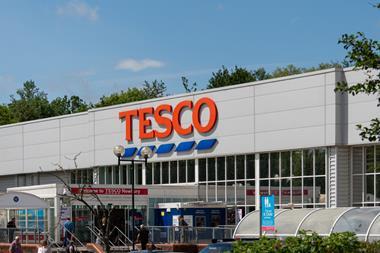

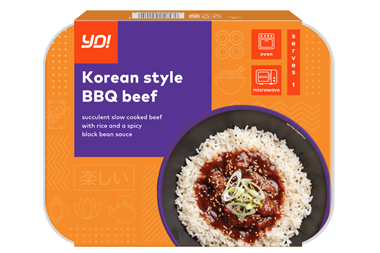
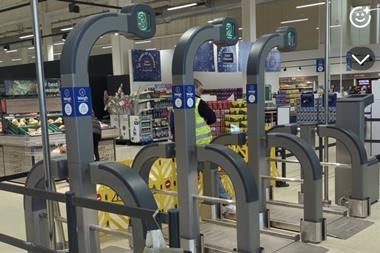
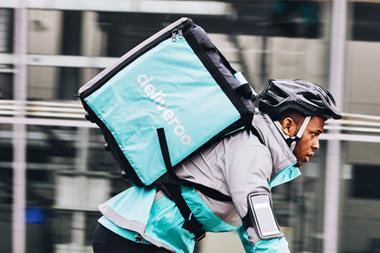
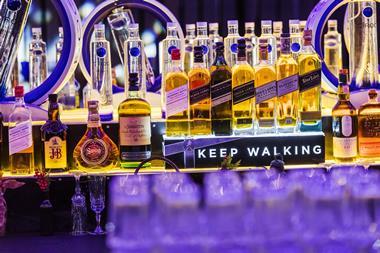




No comments yet